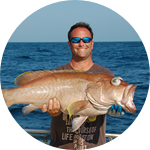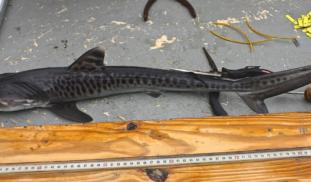Please wait...
About This Project
Growing concern for declining shark populations is driving the need for effective conservation and management plans. An important, yet often missing, component of these plans is accurate dietary data. Tiger sharks are iconic predators, notorious for the wide variety of prey they consume. Using satellite tags, our goal is to investigate the link between oil platforms and the prevalence of an intriguing prey item common to tiger sharks in the northern Gulf of Mexico: terrestrial birds.

Browse Other Projects on Experiment
Related Projects
How do polar bears stay healthy on the world's worst diet?
Polar bears survive almost entirely on seal fat. Yet unlike humans who eat high-fat diets, polar bears never...
Uncovering hidden insect diversity associated with a likely undescribed gall-forming midge
Does a likely undescribed species of gall-forming midge (pers. comm. Ray Gagné) on Eriodictyon plants (Yerba...
Macrofungi of the California archipelago
The eight islands of the California Archipelago are a well-studied biodiversity hotspot — but we know almost...



